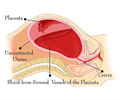
‘Collegial assistance to midwives not only improves postnatal care but also reduces the workload of other health professionals.’
Tweet it Now
“Although severe perineal tears are rare, they can lead to significant and sometimes lifelong consequences for the women. Symptoms include pain, incontinence, problems with sexual health and other complications”, says Christine Rubertsson, professor at Lund University, a midwife at Skåne University Hospital, and principal investigator for the study.There is currently a lack of evidence for many of the preventive methods used to reduce perineal tearing during childbirth.
To explore, a new study involving 4,264 women who were planning their first vaginal birth consent was involved. During the births, 3 750 women were randomly assigned to get support and care from either one or two midwives.
Of the 1 546 who gave birth with two midwives, 3.9% suffered from perineal tears compared to 5.7% of the 1 513 women who received standard care from one midwife. There were no other differences between the groups regarding tears or the newborn's health following the birth.
The women who participated in the study also responded to two questionnaires; one month and one year after the birth. The questions included birth experiences and the care they received, as well as their physical, mental, and sexual health.
Advertisement
It is also important to analyze women’s and midwife’s experiences of this clinical practice to further develop collegial assistance.
Advertisement
Source-Medindia











